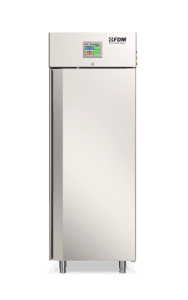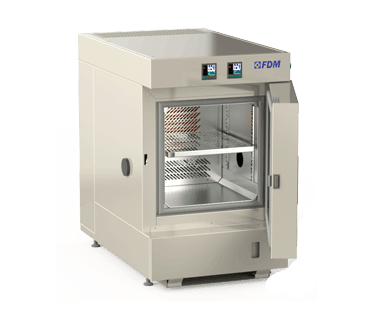
We all know that we need to pay attention to the humidity of an environment for the well-being of our body. Less often we think about how humidity affects all the objects that surround us and how, above all, most of these are designed specifically to cope with different levels of humidity.
Humidity testing is a critical step to ensure that products and materials resist different environmental conditions without deteriorating, maintaining functionality and safety.
In today's article we will see in detail what humidity testing is for, how it works and what tools are needed to perform it.
What is Humidity Testing for?
Humidity tests test products and materials in relative humidity conditions, which can vary from dry desert to humid tropical. This type of testing is crucial for many industrial sectors.
In electronics, for example, humidity is a real threat to the durability and reliability of devices. Condensation can cause oxidation in circuits, with serious risks of malfunction. Humidity tests can simulate conditions such as climate changes to verify that smartphones, computers and even individual components such as electronic boards.
In the automotive sector, humidity has a significant impact on internal and external components. We are talking about fabrics, plastics and car coverings that must maintain their aesthetic and structural properties in any type of environment. Humidity tests, for example, simulate exposure to condensation conditions generated by heating the passenger compartment or tropical climates.
In construction, materials such as wood, paints and concrete are used for which humidity tests are essential.
Especially necessary for buildings in areas with high humidity or on sea coasts, where the presence of salty air can accelerate phenomena such as corrosion.
Even the food and pharmaceutical sectors use humidity tests, particularly regarding the characteristics of the packaging they use, which must be able to guarantee the preservation of the products.
Perform
Climate Stress
Discover the new series of Climate Chambers for controlled climate testing
How Does Humidity Testing Work?
Humidity tests are performed in a specific laboratory instrument called a climate chamber.
Climatic chambers allow you to simulate, in a controlled environment isolated from the outside, a whole series of environmental conditions. Inside them, it is in fact possible to establish, regulate and monitor a whole series of parameters. The two that cannot be missing are temperature and, precisely, relative humidity.
As regards humidity tests, we have two categories of tests:
- Static Tests: In these tests the parameters are kept constant for prolonged periods. For example, it is possible to examine how a material absorbs or retains humidity in stable conditions. In questi test i parametri vengono mantenuti costanti per periodi prolungati. Ad esempio, si può esaminare come un materiale assorba o trattenga umidità in condizioni stabili.
- Cyclic Tests: These tests vary the humidity and temperature levels according to specific cycles, replicating seasonal or sudden climate changes. They are particularly useful for products that face frequent temperature variations or extreme conditions.
International Standards for Humidity Testing
Like all tests on products and materials, humidity tests are also regulated by international standards that define the procedures.
Among the most used are:
ISO 6270-2: Specifies the methods for exposure tests in conditions of constant or cyclic humidity, used especially for painted materials.
IEC 60068-2-78: Defines the methods for tests in humid environments, particularly applied in the electronics sector to verify the resistance of components and circuits.
ASTM D2247: A reference for prolonged exposure to humidity at constant temperature, widely used in construction and automotive.
You cannot find the ideal chamber for your test?
Create your own environment, according to any test requirement
The FDM Climatic Chamber for Humidity Testing
A leading company in the sector for over 70 years, FDM - Environment Makers designs technologically advanced climatic chambers capable of performing all the tests listed above.
In addition, our technicians can co-design a customized climatic chamber that meets the specific needs of the customer.
For further doubts and questions, please do not hesitate to contact us.
Would you like to receive a quote or do you have questions about the product?
Contact us to receive more information about this Product.



